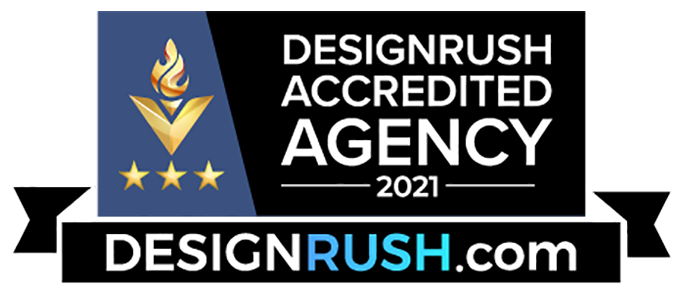SEO - Search Engine Optimization
Want higher Google rankings? Then make sure to check out this new case study.
In today’s video you’ll see how my SEO checklist helped Proven increase their organic traffic by 88.3%.
Specifically, you’ll learn…
Why “Zombie Pages” can doom your search engine rankings… and how to identify and eliminate them. In fact, as you’ll see, Sean from Proven ended up deleting 40k pages!
The next step in my SEO checklist can improve Google rankings FAST. And that step is cleaning up technical SEO issues.
Third, we’ve got on-page SEO. Here’s where I show you how to optimize your content around your target keyword (or keywords).
Next, I show you how to optimize your site around two new-ish ranking factors: click-through-rate (CTR) and dwell time. Both are becoming more and more important parts of Google’s algorithm.
Now that your content is optimized for keywords and user experience signals, it’s time to speed up your site’s loading speed. I show you two cool SEO tools that you can use to improve your site’s loading time.
Last but not least, it’s time to publish a piece of content using the Skyscraper Technique. The fact is: if you want higher Google rankings, your content needs to be significantly better than what’s out there. And that’s where this step comes into play.
All in all, I hope this SEO checklist helps you improve your Google rankings.
Transcript
00:00
– In this video I’m gonna show you
00:01
how to get higher Google rankings fast.
00:03
In fact, one of my readers recently used the checklist
00:06
from this video to increase his organic traffic by 88.3%.
00:11
I’m Brian Dean, the founder of Backlinko.
00:13
The place where marketers turn
00:14
for higher rankings and more traffic.
00:17
In this video, you’re gonna see the checklist
00:18
that I use for all of my SEO clients.
00:20
You’ll also learn why you might want to delete,
00:23
yes delete, half the pages on your website.
00:26
And a simple trick you can use to improve
00:28
your Google rankings fast.
00:30
Keep watching.
00:31
(soft electronic music)
00:36
A few months ago, I sent out a newsletter
00:38
to my email subscribers.
00:39
This email listed out some of my all-time
00:41
favorite traffic hacks.
00:43
Out of the blue, the founder of Proven.com,
00:45
Sean Falconer, replied to that email.
00:48
He said, “Dude, I’ve tried all of these techniques before,
00:50
“and they helped us get more traffic.”
00:52
When I looked at Sean’s site, I saw that he was doing
00:54
a solid job with his content marketing and SEO.
00:58
But, I also noticed a few mistakes
00:59
that were holding him back from Google’s first page.
01:02
That’s when I sent him this message.
01:05
A few hours later, Sean got back to me.
01:07
After executing the checklist that I’m about to show you,
01:09
Sean’s organic traffic shot up by nearly 50% in 21 days.
01:14
And once the checklist had time to kick in,
01:16
Proven’s traffic increased by a whopping 88.3%
01:21
three weeks after that.
01:22
With that, let’s dive in to the checklist
01:24
that Sean used to get higher Google rankings.
01:26
Your first step is to find and eliminate
01:29
what I call zombie pages.
01:31
I used to think that Google rewarded sites
01:33
that publish lots and lots of unique content.
01:35
But I was wrong.
01:36
Today, I know the truth.
01:38
The truth is that Google doesn’t want you
01:40
to publish content just for the sake of publishing content.
01:43
In fact, a Google employee recently stated
01:46
that they prefer websites that publish fewer
01:49
high quality pages.
01:50
This quality over quantity approach
01:52
is one of the secrets behind my blog’s success.
01:55
In fact, Backlinko gets over 150,000
01:58
unique visitors per month.
02:00
Unlike most blogs, I only publish every four to six weeks.
02:04
But when I do, I make sure each and every post is awesome.
02:08
In fact, at the time of shooting this video,
02:10
Backlinko only has 37 total blog posts.
02:13
Fortunately, Sean only published high quality content
02:17
on his blog.
02:18
So, that wasn’t an issue.
02:19
The problem was his site had lots of zombie pages.
02:22
So, what are zombie pages?
02:24
Zombie pages are pages on your site
02:26
that don’t provide any value.
02:28
For example, zombie pages are pages like old
02:31
and outdated blog posts and press releases,
02:34
category and tag pages, search results pages,
02:37
eCommerce product pages that don’t get any sales,
02:40
thin content pages, and pages with duplicate content.
02:44
In theory, Proven.com shouldn’t have a ton of pages.
02:47
After all, Proven is an online job board
02:50
where job postings come and go.
02:52
Despite that, they had nearly 50,000 pages
02:56
indexed in Google.
02:57
That’s a lot.
02:58
As it turned out, Proven didn’t automatically delete
03:01
their old job postings.
03:03
So, these pages stuck around even though the job
03:05
had been filled years ago.
03:07
To make matters worse, Google was indexing
03:10
their search result pages which are classic zombie pages.
03:14
So, I recommended that they delete their old job postings
03:17
and add the no index tag to their search results.
03:20
Sean quickly took action.
03:23
Thanks to these changes, Proven now only has
03:25
around 4,000 pages indexed.
03:27
Which is 40,000 less than they had before.
03:31
Step number two is to fix any technical SEO issues
03:34
that your site has.
03:36
There are literally hundreds of technical problems
03:39
that can impact your SEO.
03:40
Fixing them is one of the fastest ways
03:43
to get higher Google rankings.
03:44
That said, here are some of the most common technical issues
03:47
that I see during SEO site audits.
03:51
How can you find these technical SEO issues on your site?
03:55
I recommend using the Raven tool Site Auditor
03:58
or SEMrush’s Site Audit tool.
04:01
They’ll crawl your site and let you know
04:02
about technical problems that might
04:04
be hurting your site’s SEO.
04:06
Fortunately, Proven didn’t have
04:08
too many technical SEO issues.
04:10
That’s mostly due to the fact that we deleted
04:13
so many zombie pages.
04:14
Fewer pages equals fewer problems.
04:17
The only problems I could find were some missing
04:20
ALT text on images and a handful of duplicate titles.
04:23
Not a big deal but worth fixing.
04:26
As expected Sean quickly took care of all
04:29
these technical SEO problems.
04:31
Now that we’ve fixed Proven.com’s technical problems,
04:34
it was time to optimize their content.
04:36
I probably don’t need to tell you that on-page SEO
04:39
can make or break your site’s rankings.
04:42
That’s why I dedicate an entire step
04:44
of my SEO checklist to on-page SEO.
04:47
Because Proven had thousands of pages,
04:49
I knew I couldn’t optimize every single one.
04:52
So, Sean sent me his top 10 most important pages.
04:56
Now, some of Sean’s most important pages
04:58
were blog posts and others were commercial pages
05:01
that sold his services.
05:03
So, let’s look at a quick example of a page
05:05
that I optimized for Sean.
05:06
A blog post called Best Questions to Ask References,
05:10
The Complete List.
05:11
Sean’s target keyword for this post
05:13
was questions to ask references.
05:16
So, I added that keyword to the top of the page.
05:19
Why?
05:20
Because Google puts more weight on words
05:21
that appear in the beginning of your content.
05:24
So, it’s important that your keyword shows up there.
05:26
I also sprinkled in a few LSI keywords like business tips.
05:30
LSI keywords are terms that are closely related
05:33
to your target keyword.
05:34
When you include these LSI keywords
05:36
in your content, you’ll get a rankings boost.
05:38
In fact, my recent analysis of one million Google
05:41
search results found that LSI keyword-rich content tended
05:45
to outrank content that didn’t contain LSI keywords.
05:49
So, how can you use LSI keywords to get higher rankings?
05:53
Well, let’s say you just wrote an article about coffee.
05:56
LSI keywords for coffee would be things like mug,
05:59
caffeine, and Starbucks.
06:00
So, you want to make sure that you include
06:02
those terms in your content.
06:04
Our fourth step is to optimize your title
06:06
and description tag for click-through rate.
06:09
You probably already know that CTR
06:10
is a huge ranking factor right now.
06:13
Think about it, if people searching for a keyword
06:15
click on your result more than others,
06:17
it tells Google that you’re the best result
06:20
for that keyword and you’ll rank higher in Google.
06:22
In fact, a recently published Google research paper
06:25
states that, “Click-through read data has proven
06:28
“to be a critical resource for improving
06:30
“search ranking quality.”
06:32
So, it’s clear that CTR is an important ranking signal.
06:35
The question is, how can you optimize for it?
06:38
Let me walk you through a real life example.
06:41
One of Sean’s best blog posts was a huge list of job boards.
06:45
Considering how epic this content was,
06:47
it should’ve been ranking in the top three.
06:49
But, Sean’s page was stuck in the fifth spot.
06:52
And I had a feeling that the page’s title and description
06:56
was hurting it’s CTR and rankings.
06:59
Here’s what I did to turn things around.
07:01
First, I looked at the ad words ad
07:03
that showed up when I searched for best job boards
07:06
and other related keywords.
07:07
I noticed that almost every ad used a specific number.
07:11
And none of the ads used the term niche talent.
07:15
So, I changed Sean’s title tag to this
07:17
and his description tag to this.
07:19
These changes boosted that pages organic
07:22
click-through rate by 64.1%.
07:25
And Sean currently ranks in the top three
07:27
for his target keyword.
07:28
Now that I improved Sean’s click-through rate,
07:30
it was time to optimize his site
07:32
around another important ranking factor, dwell time.
07:35
That’s what step number five is all about.
07:38
So, what is dwell time?
07:40
And how can you optimize for it?
07:41
When someone searches for a keyword
07:43
and clicks in a result, two things can happen.
07:46
They can stay in your site for a long time
07:48
or they quickly click away.
07:50
The amount of time someone spends on your site
07:52
is known as dwell time.
07:54
As you might expect, the longer your dwell time,
07:57
in general, the higher your page will rank in Google.
08:00
Here’s what I did to quickly improve Sean’s dwell time.
08:03
First, I moved Sean’s content up so it appeared
08:07
at the top of the page.
08:08
You see, Proven used to have huge gaps
08:10
that pushed their content below the fold like this.
08:14
So, I cut this gap down by about 50%.
08:17
Sean’s post also had giant images
08:19
that pushed their content down even more.
08:25
I made these images smaller so they took up less room.
08:28
Next, I made Sean’s introductions more sticky.
08:31
Here’s the deal.
08:32
When someone comes to your site from Google,
08:34
your intro makes them stick around or click away.
08:37
In fact, intros are so important
08:39
that I spend more time on my intros than my headlines.
08:43
In Sean’s case, I noticed that his introductions
08:45
weren’t formatted in a reader-friendly way.
08:48
See how all that text is squished together?
08:51
That’s really hard to read.
08:52
So I formatted his intro so there was only
08:54
one sentence per paragraph.
08:56
I also cut out a few lines of text
08:58
that weren’t compelling or interesting.
09:00
Overall, these tweaks boosted
09:01
that page’s dwell time by 12.23%.
09:05
Not too shabby.
09:07
Okay, so our second to last step is to improve
09:10
your site’s loading speed.
09:11
Can making your site faster really improve
09:13
your Google rankings?
09:15
Definitely.
09:16
In fact, our search engine ranking factor study
09:18
found that faster loading pages
09:20
tended to outrank slow pages.
09:22
Here’s how to quickly evaluate and improve
09:25
your site’s loading speed.
09:26
First, head over to Google PageSpeed Insights.
09:30
Just enter your site into the tool
09:31
and fix the problems that it tells you about.
09:34
Next, check out GTMetrix.
09:36
Just like Google’s tool, GTMetrix will show you
09:39
potential issues with your pages code.
09:41
But, it also let’s you know about server hosting problems
09:44
that can slow down your site.
09:46
For example, in Sean’s case, his images weren’t compressed.
09:49
So, they took forever to load.
09:51
And this single fix made a huge impact on his loading speed.
09:55
Now that Sean’s site was optimized,
09:57
error-free, and fast, it was time for the last step.
10:00
Which is to publish a piece of content
10:02
using the skyscraper technique.
10:05
You probably already heard about the skyscraper technique.
10:08
If you haven’t, here’s the deal.
10:10
The skyscraper technique is where you find
10:12
the best content in your industry
10:14
and then create something way better.
10:16
So, I sent an email to Sean and asked him,
10:18
“Have you noticed any content that’s ranking
10:20
“in Google, but isn’t even that good?”
10:23
He said, “Actually, everything I’ve seen
10:24
“written about job descriptions is pretty weak.”
10:27
Sean was right.
10:28
Most of the content out there about job descriptions
10:31
were simple lists of links to different examples
10:34
of job descriptions.
10:35
For whatever reason, they all used the same
10:37
lame stock photos.
10:39
So, I worked with Sean to create something way better
10:42
than what was out there.
10:43
How?
10:44
First, instead of a list to links to other pages,
10:46
we listed each job description on a single page.
10:50
Next, Sean added helpful information about each job
10:53
like the average salary and education requirements.
10:56
Finally, he used quality images instead
10:59
of lame stock photos.
11:01
Sean’s post did great.
11:03
It got a short-term surge in traffic after it went live.
11:06
Today, Sean’s skyscraper content currently ranks
11:09
in the top five for his target keyword.
11:12
And thanks to this content and the other techniques
11:14
from this checklist, Sean’s organic traffic
11:16
increased by 88.39%.
11:20
There you have it, my seven step checklist
11:22
to improve your Google rankings.
11:23
If you like this video, make sure to subscribe
11:25
to my YouTube channel right now.
11:27
That way, you won’t miss out on other actionable
11:29
SEO videos like this one.
11:31
Just click on the subscribe button below this video.
11:34
Also, if you want exclusive SEO tips
11:36
that I only share with subscribers,
11:38
head over to Backlinko.com and sign up for the newsletter.
11:41
It’s free.
11:42
Now, I want to turn it over to you.
11:44
Which tip from this video are you gonna try first?
11:47
Are you gonna work on your dwell time?
11:48
Or do you want to delete zombie pages?
11:51
Let me know by leaving a comment below right now.
11:54
Fifth spot.
11:55
Did I say that right?
11:56
What’s up?
11:58
I do that a lot.
11:59
All right, yeah, I did.
12:00
Oh, but it’s okay.
12:01
Man, my acting skills.
12:04
Okay, that’s a tough one.
12:05
How are we doing, shine?
12:07
(laughing)
Optimized Webmedia Marketing is the best SEO Vancouver company. To learn how Optimized Webmedia Marketing can help optimize your website to attract more organic visitors, book a free consultation.
SEO, GOOGLE ADS, PPC, DIGITAL MARKETING SOCIAL MEDIA, AMAZON, WEB DESIGN
OUR AWARDS








I have worked with Optimized Webmedia Marketing since the start of the year. Since starting to work with them, we have seen a significant increase in sales through our PPC campaigns. The team is great to work with, they are always professional, very detailed and always deliver work on time. Highly recommend!
Jelena Radinovic
Optimized Webmedia Marketing provides great SEO, PPC, and Digital Marketing Services.They really care about their clients, they are responsive and professional, and get great results.I highly recommend this Digital Marketing Agency.
Maxim Wong
We have been working with Optimized Webmedia Marketing since our company was young. They handled all our web related promotions and designs since day one. With their help and support, we were able to boost our clientele super fast and become one of the top companies in lower mainland. Their knowledge of digital marketing is next to none and we highly recommend their service to all business owners!
Aimee Qiu
OUR CLIENTS












OUR PARTNERS







OUR ASSOCIATIONS









